The Four Virtues of Chinese Calligraphy Brushes: Tip, Roundness, Evenness, and Resilience (With Brush Structure Diagrams)
Previously in our article “Top Ten Chinese Calligraphy Brush Brands,” we briefly mentioned the four virtues of calligraphy brushes—tip, roundness, evenness, and resilience—but didn’t explain them in detail. Here we’ve collected “Teacher Gudian’s” article and compiled information from other websites about brush construction, including images illustrating the four virtues. We hope this helps you gain a deeper understanding of these essential qualities.
The Four Virtues of Chinese Calligraphy Brushes Explained
Traditionally, a good calligraphy brush should meet four standards known as the “Four Virtues” (四德), similar to how a noble person should possess the four virtues of benevolence, righteousness, propriety, and wisdom.
However, these four qualities aren’t easy to evaluate, making them somewhat challenging as criteria for selecting brushes. It’s like trying to identify noble people for government positions—when even the judges may lack the ability to recognize true nobility, the standard becomes impractical.
Nevertheless, we can still learn about these virtues, even if we might not be able to apply them fully when selecting brushes.
1. The Four Virtues of Chinese Calligraphy Brushes-Tip (尖)
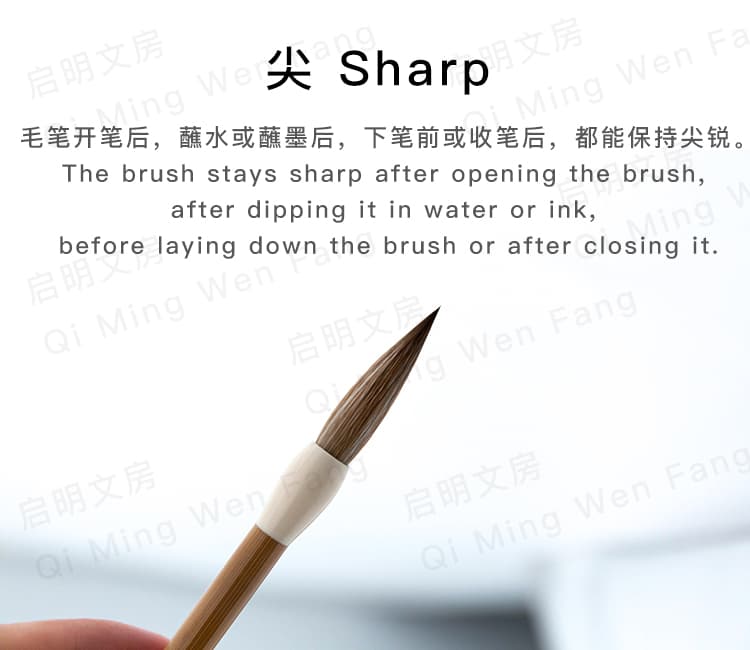
The tip should be sharp and pointed. This requires both quality materials and excellent craftsmanship. Many large brushes that can write small regular script demonstrate excellent tip quality. However, brushes with good tips generally don’t last as long because quality hair wears down easily. Nylon bristles are more durable, which is one reason why nylon brushes have become popular. Additionally, “tip” refers to the brush’s ability to gather its bristles together, without hollow spaces forming in the brush’s core.
2. The Four Virtues of Chinese Calligraphy Brushes-Roundness (圆)
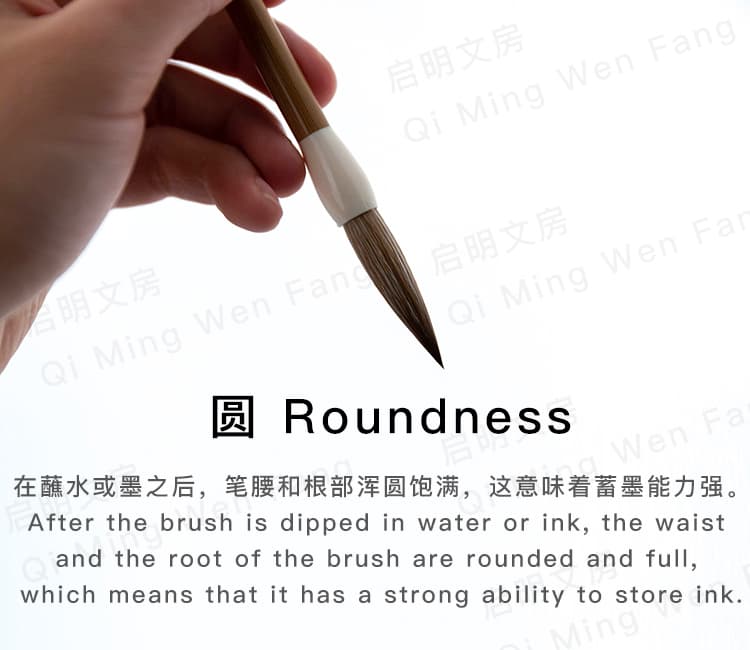
Roundness doesn’t simply mean the physical shape. Most brushes in stores are held together with glue and look round—so what’s the difference? True roundness means the brush can exert force in any direction. This requires advanced brush-handling skills to detect. A brush lacking roundness will perform inconsistently, appearing round but not feeling round when used.
Roundness also includes having a straight handle. You can check this by rolling the brush on a smooth surface. Some people prefer curved handles, which is a matter of personal preference. In my view, a round brush head that feels comfortable to use is probably more important than a perfectly straight handle.

When fully opened, the best brush head resembles a jujube pit, indicating sufficient bristles and strong ink-holding capacity.
3. The Four Virtues of Chinese Calligraphy Brushes-Evenness (齐)
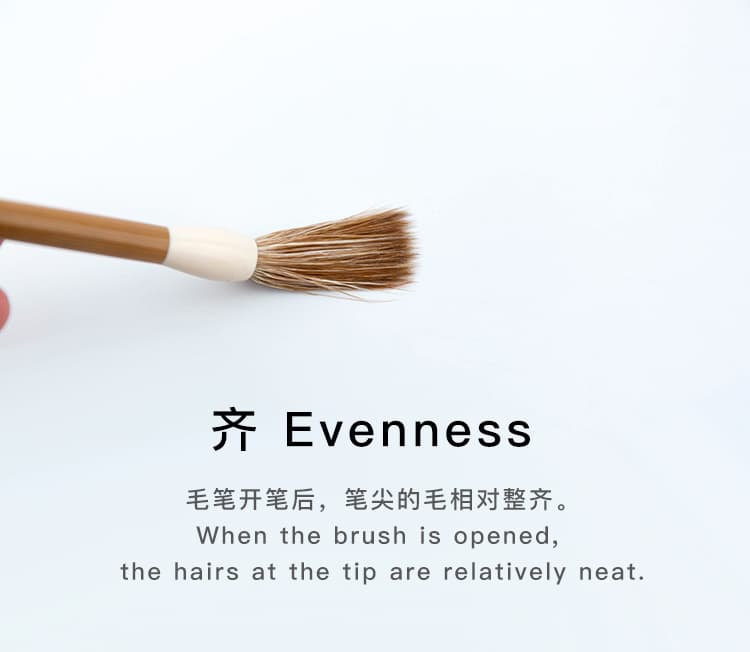
Evenness is closely related to roundness. A round brush indicates evenly distributed bristles. Conversely, even bristles make for smooth rotation. A brush with the virtue of evenness distributes force uniformly, allowing writers to express their intentions easily.
4. The Four Virtues of Chinese Calligraphy Brushes-Resilience (健)
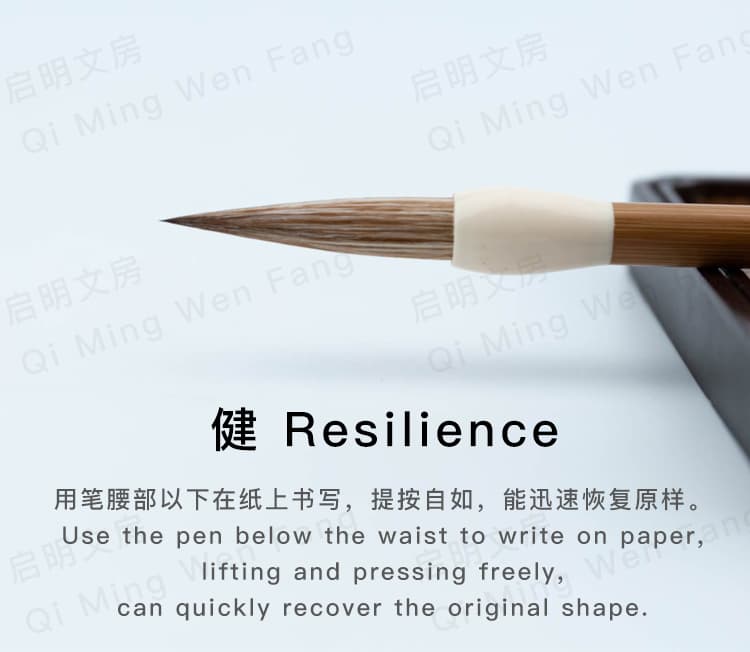
Resilience doesn’t just mean strong elasticity. It refers to the brush’s ability to quickly return to its original shape after being deformed, ready for the next stroke. If elasticity is too strong, the brush will try to recover before you’ve completed your stroke, making it feel unresponsive. If elasticity is insufficient, the brush will remain deformed after use, preventing further strokes.
Many brushes on the market contain too much nylon or pig bristle, causing excessive resilience and making them difficult to use. For more on this, refer to “What Makes a Brush Good for Writing? (With Detailed Illustrations).”
Specifically, a brush’s resilience includes three parts: tip resilience, middle resilience, and root resilience. Good tip resilience requires quality primary materials; middle resilience needs good secondary materials and craftsmanship; root resilience depends on quality filler materials and deep planting. Beginners typically cannot distinguish these qualities.
Evaluating Brush Quality
Evaluating the four virtues requires sensitive hands and a refined touch that beginners generally lack. Therefore, judging brushes by these virtues isn’t a common method for most people.
The usual approach is to find quality brushes through experts and buy extra to keep in stock. (Friendly reminder: We recommend reading “Top 10 Chinese Calligraphy Brushes: The Ultimate Guide to Selection and Care” The four images demonstrating the virtues are from Qiming Wenfang.) If you’d like to make friends through calligraphy, add my WeChat: qiming9467, and I’ll send you some calligraphy learning materials.
Calligraphy Brush Structure
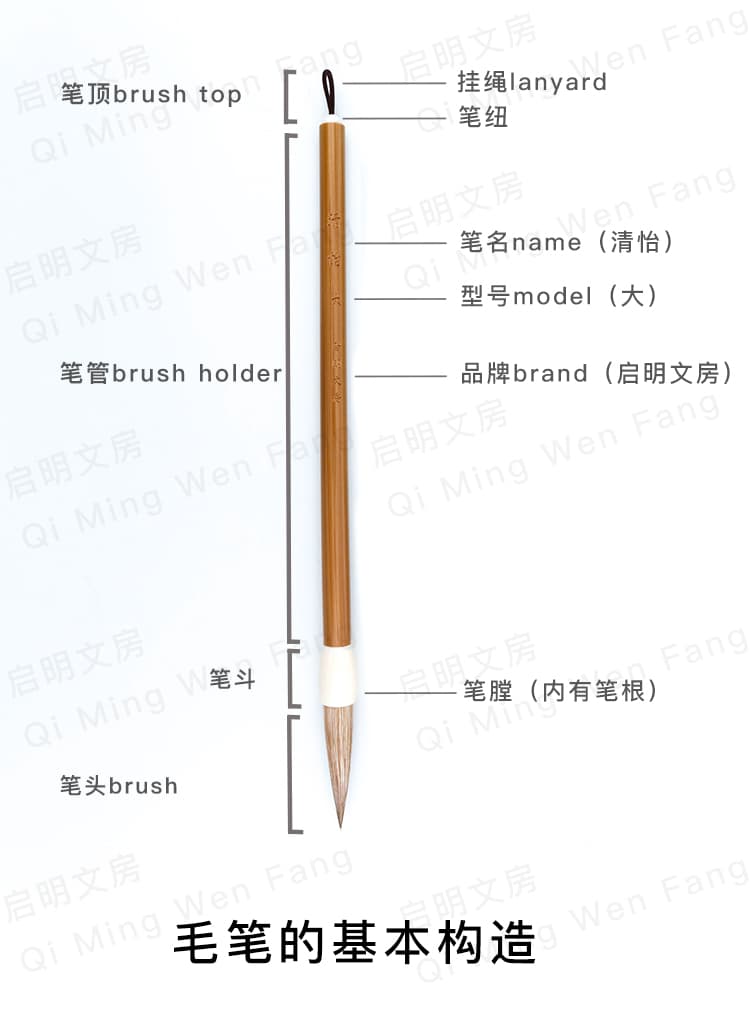
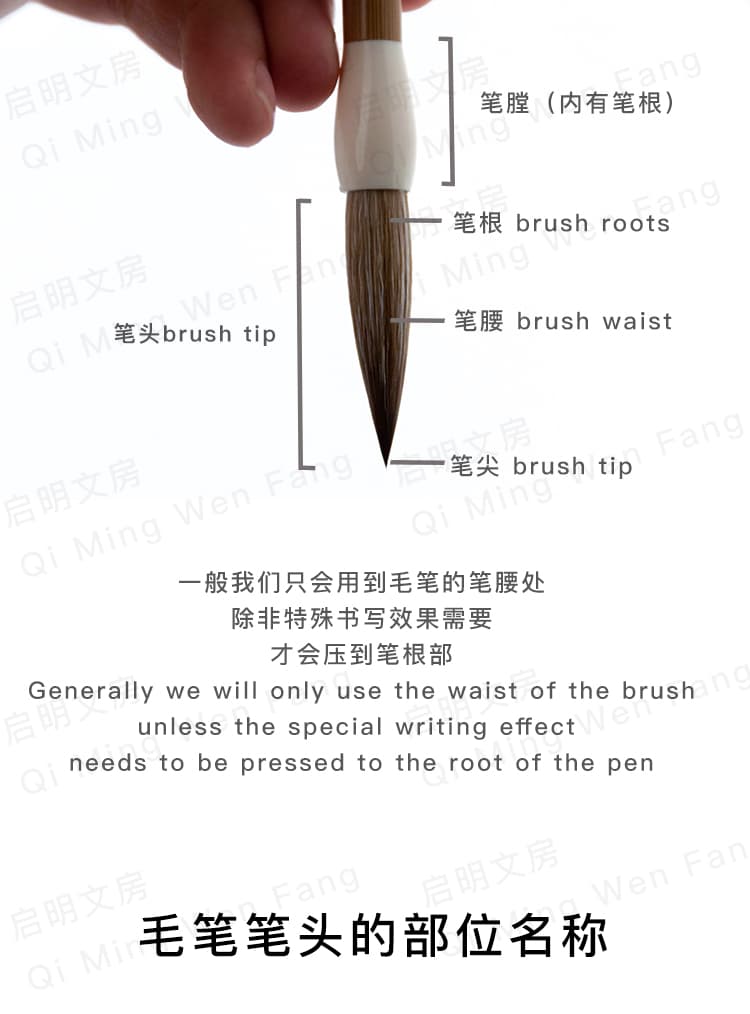
Here’s a diagram of a complete calligraphy brush structure. Sometimes different terms are used for certain parts, which you can reference in “This Article Explains All Brush Part Names and Measurement Standards!” But this doesn’t prevent us from understanding the brush. Below, we’ll focus on just the brush head.
The brush head is entirely handmade, with parts that have various names:
- Primary tip (头锋)
- Secondary tip (二锋)
- Tertiary tip (三锋), also called lining hair, padding, or supporting hair
These together form what’s called the brush column and covering hair. Here’s what each part means:
The primary tip refers to the very tip of the brush—the central hairs of the brush column, also called core hair or surface hair. These must be made of the highest quality hair with transparent tips. The length of these tips varies according to the quality of the brush. The tip is crucial to a brush’s quality and lifespan—the longer the tip, the more expensive the brush.

The secondary tip uses hair with tips that connects from below the primary tip. The quantity must be proportional, with appropriate length and layering.
The tertiary tip follows the same principle, connecting below the secondary tip. The length and layering of primary, secondary, and tertiary tips must have at least 10 layers of quality hair to achieve the highest standard—the four virtues.
The primary, secondary, and tertiary tips are each handmade separately, involving selecting, evening, and coiling the hair. They are then combined, repeatedly folded, and combed more than a dozen times until evenly distributed with no visible difference in length. The brush column is then made individually, and the covering hair is similarly combed repeatedly before being wrapped around the column.
The root part combines hair from all three tips. Making mixed-hair brushes is even more difficult because harder hairs must be added to increase resilience, requiring more delicate work. Too many hard hairs will cause splitting and won’t bundle properly; too few will lack sufficient elasticity.
The covering hair uses finer, more delicate hair, following the same process as the brush column. According to the size of the brush head, the primary, secondary, and tertiary tips must be proportionally balanced (like tailoring clothes) and wrapped tightly around the brush column for optimal effect. The covering hair is like clothing or a blanket for the brush.
Brush Craftsmanship and Ethics
These techniques reflect thousands of years of historical experience. Today, we still need to research and discuss with calligraphers to improve manufacturing techniques and keep pace with the times. Making a brush head requires at least 100 different steps and demands profound research and noble craftsmanship to achieve the four virtues.
Currently, while there are many writing implements in the market, truly excellent ones are rare. I believe that not only should brushes possess the four virtues, but brush merchants and craftsmen should also embody four virtues: moral virtue, aesthetic virtue, artistic virtue, and technical virtue. Without these virtues in the craftsman, the brush cannot possess its four virtues. Here’s why:
Famous Chinese calligrapher and Vice Chairman of the Chinese Calligraphy Association, Liu Bingsen, once complained: “I have several large boxes of brushes at home—enough to open a brush shop—but I can hardly find a few that feel right in my hand.”
Liu Wenhua, Director of the Chinese Calligraphy Association Training Center, also shared his brush-buying experience. He once found a brush that looked full and round with smooth, straight hair, and was satisfied enough to spend several hundred yuan on it. But when he tried it at home, he couldn’t write a single character properly—wasting hundreds of yuan. This demonstrates the problem with merchant ethics.
Deceptive Brush-Making Practices
We’ve discussed the materials and processes for making primary, secondary, and tertiary tips. Without moral integrity and honesty, some makers will:
- Use hair without tips, inferior hair, or yellow hemp hair cut into a brush column shape, then cover it with better hair to make it look complete. They glue it tightly so it appears round, white, and pointed, but contains no quality materials inside.
- Use a small amount of quality hair for the primary tip, while using inferior hair for the secondary and tertiary tips, cut into shape and padded around the column as supporting hair. Such brushes feel acceptable at first but soon develop problems like splitting tips.
- Due to market competition, some makers exploit calligraphy enthusiasts’ lack of knowledge and desire for bargains by producing brushes that look good and are cheap but have extremely poor quality—often hollow inside.

Understanding True “Roundness”
It’s worth noting what “roundness” truly refers to. The roundness virtue specifically refers to the supporting hair—this is crucial. When there’s sufficient supporting hair, the brush meets the roundness standard, moving smoothly with fullness and strength. Without it, the brush will feel flat, thin, and lacking in weight.

People often mistakenly think “roundness” refers to the brush waist or belly looking round and smooth, which is incorrect. Any brush belly can be made round—even a handful of straw can be shaped into a round brush belly.

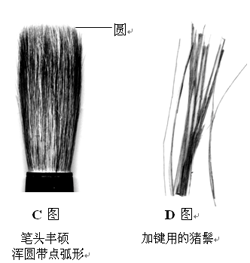
The images in this article show: Figure 1 represents a genuine brush with all four virtues; Figures 2, 3, and 4 show brushes without virtues. I hope calligraphy enthusiasts will be careful when purchasing brushes. For more information about brush structure, I recommend reading “Calligraphy Brush Part Names and Size Measurement Standards.“


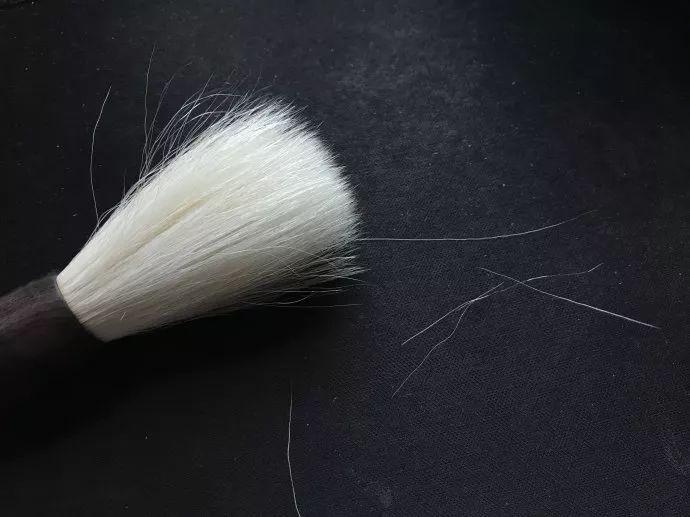
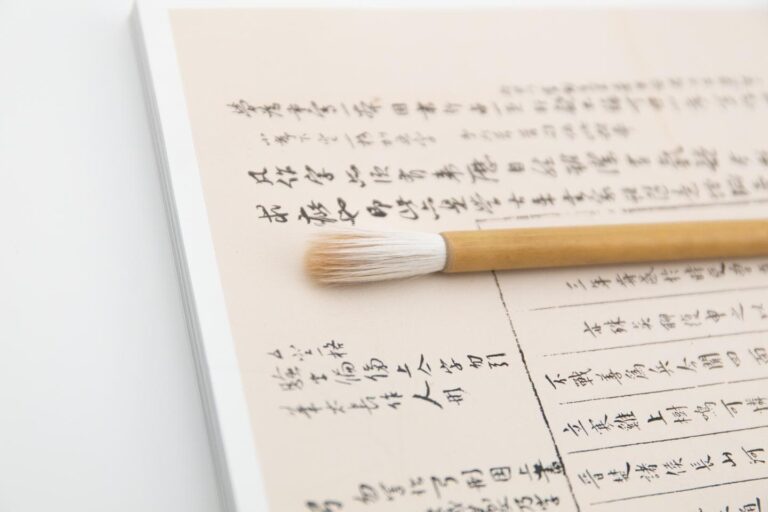
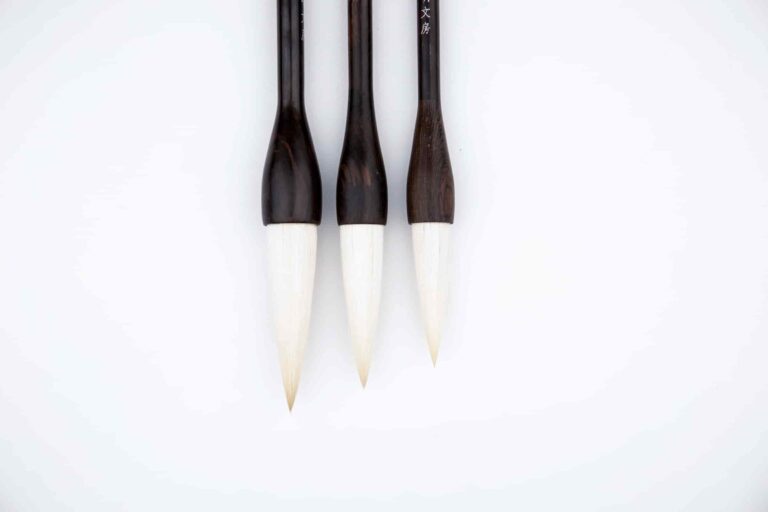
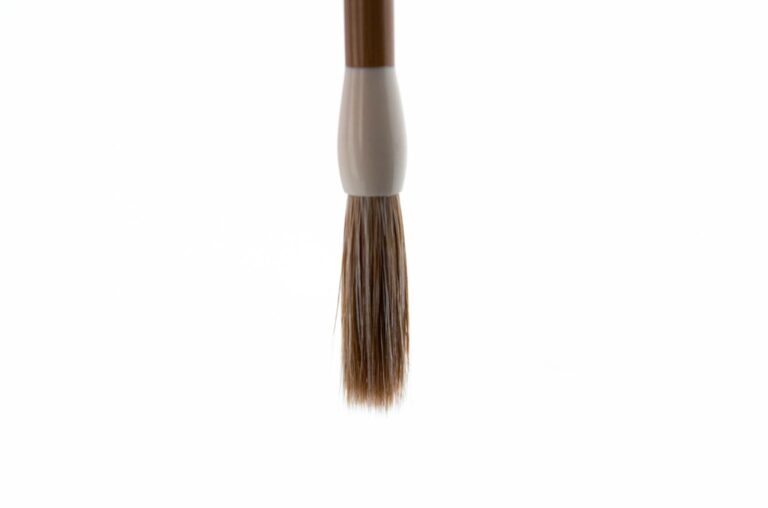
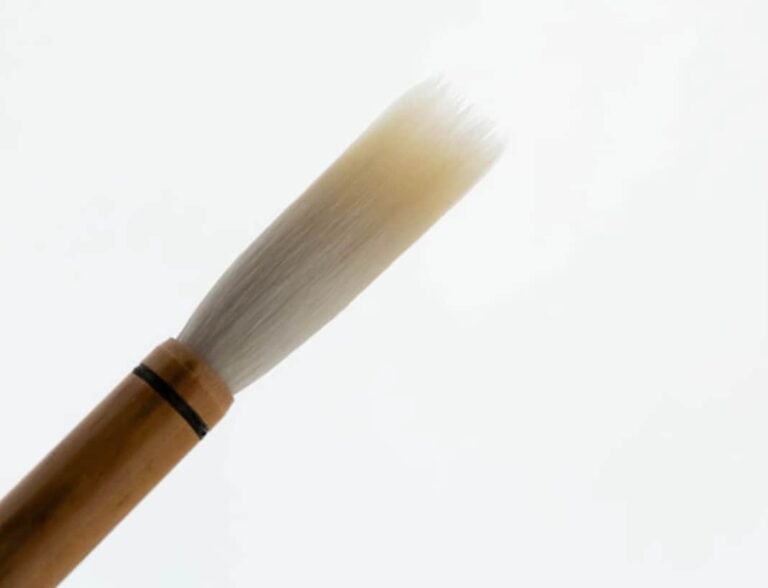
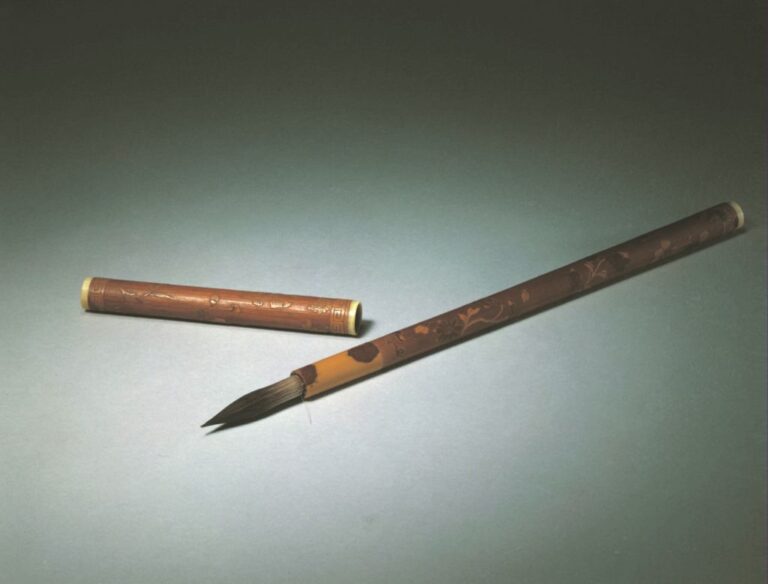
Hi, just required you to know I he added your site to my Google bookmarks due to your layout. But seriously, I believe your internet site has 1 in the freshest theme I??ve came across. It extremely helps make reading your blog significantly easier.
Thank you for visiting my website. I’m very happy that the content I wrote has gained your appreciation.
Hello, Neat post. There is an issue together with your site in web explorer, would test this… IE nonetheless is the marketplace leader and a huge component of folks will miss your magnificent writing because of this problem.
Thank you for your suggestions. My technical skills are limited, and I don’t know how to fix the issues you mentioned right now, but I will work hard to try and resolve them.
I would like to thnkx for the efforts you have put in writing this web site. I’m hoping the same high-grade web site post from you in the upcoming also. In fact your creative writing abilities has inspired me to get my own site now. Actually the blogging is spreading its wings quickly. Your write up is a good example of it.
Thank you. I will do my best to maintain the quality of my articles and ensure that everyone who reads them truly gains something valuable, especially those friends who genuinely love the art of Chinese calligraphy.
I enjoy the efforts you have put in this, thanks for all the great articles.
Thank you for enjoying these articles I’ve written about Chinese calligraphy.